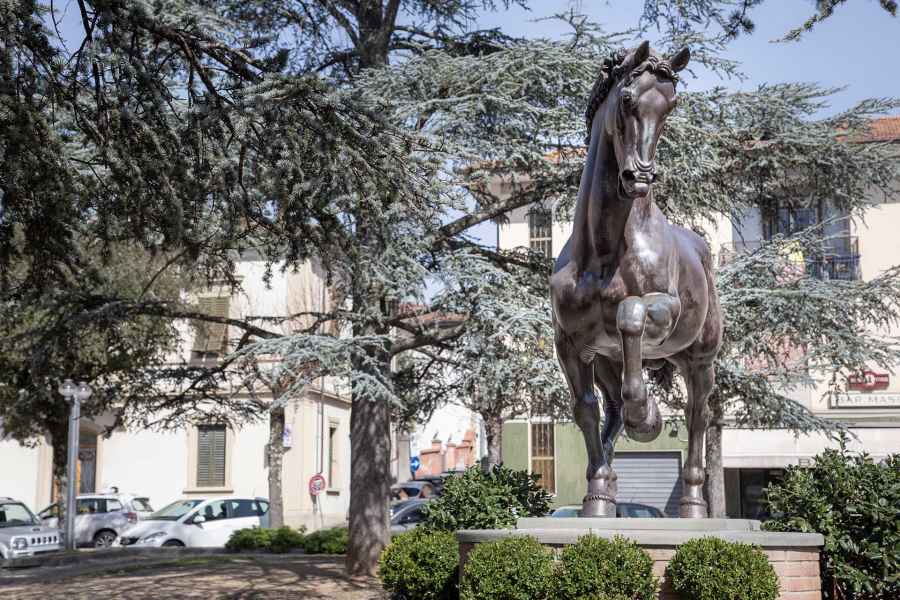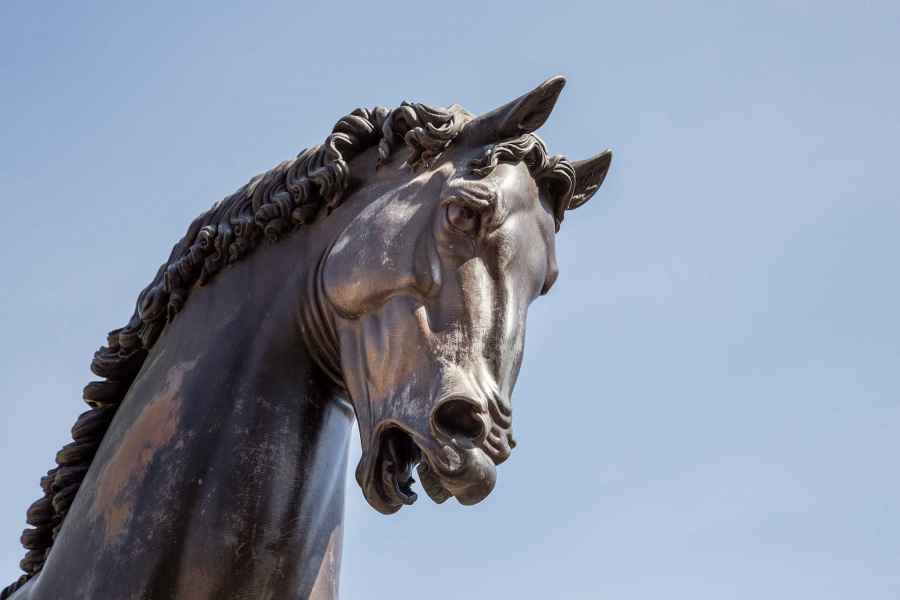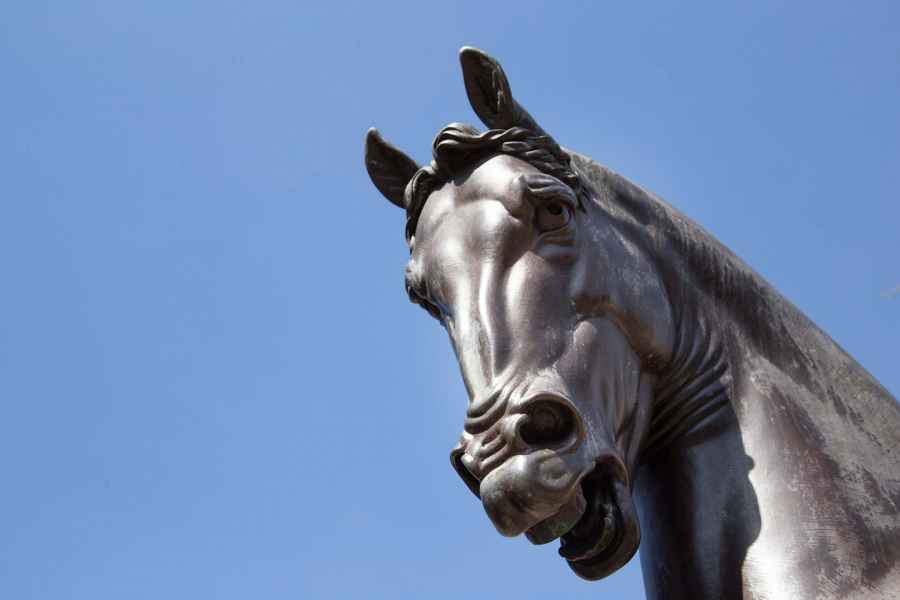The bronze sculpture at Piazza della Libertà in Vinci reproduces, on a smaller scale, the horse Leonardo designed for an equestrian monument commissioned by Ludovico il Moro in honor of his father, the first Duke of Milan, Francesco Sforza. Leonardo created the preparatory drawings and the clay model for the large equestrian statue, without, however, having the opportunity to complete the work. The horse at Vinci is the work of Japanese artist Nina Akamu and is part of a series of bronzes made to honor the Genius from Vinci. The contemporary art project The Horse is due to the initiative of a private citizen, the American Charles Dent, who founded the company "Leonardo da Vinci's Horse Inc." in the 1990s to give material form to Leonardo’s great sculptural project. In addition to the copy donated to the city of Vinci by "Leonardo da Vinci's Horse Inc.", there are others, donated to the city of Milan, to the Frederik Meijer Gardens and Sculpture Park (Grand Rapids, Michigan), and to the Baum School of Art (Allentown, Pennsylvania).

The bronze horse of Leonardo, created by Nina Akamu
Leonardo's horse was to be the highlight of a colossal equestrian statue, matured in the mind of the Genius from Vinci when he was given the commission for the work commemorating Francesco Sforza. The preparatory drawings Leonardo produced between 1482 and 1489 show the work he had in mind. The idea was that of a horse in the act of rearing and trampling the enemy. The work of preparation was very long. Leonardo drew details of individual anatomical parts of the horse, with muscles in positions of tension and quiet. He drew details from live subjects of specimens he chose personally for their anatomical features, the ones that best suited his project. Once recomposed into a whole, it was to have been the "Ideal Horse" for the Duke of Milan. Some notes taken from his manuscripts clearly show his method of reproducing the living models he selected: "Messer Mariolo’s Morel Fiorentino, a big horse – has a beautiful neck and quite a fine head; the falconer’s white nag has fine hindquarters. It is stabled at Porta Comasina; Signor Giulio’s large Cremonese horse"(Codex Forster III, f. 88r). Despite the commitment, at a certain point it became clear that the colossal rearing horse could not overcome the static problems of so difficult a posture as that presented by the design. After a sudden change of project, Leonardo finally presented, in 1493, the clay model for the new horse. It was a colossal work, over seven meters in height, which would have surpassed those of its predecessors in terms of magnificence. To carry out the work, the bronze casting of the model would have required no less than 100 tons of metal. The failure of the project was due to the lack of availability of raw material, which needed to be diverted to casting cannons, necessary for the defense of the Duchy of Este following the French invasion under Charles VIII.
Standing at the center of Piazza della Libertà in Vinci since 2001, right nearby the Museo Leonardiano, Nina Akamu’s bronze horse is about two and a half meters tall. The realization of this model was brought to completion after the death of Charles Dent, who conceived the project The Horse, but the commitment of "Leonardo da Vinci's Horse Inc."—then presided by Peter Dent, Fred and Lana Meijer, Peter Secchia, former US ambassador in Italy, and his wife Joan, and the Tallix Foundry of New York—brought the enterprise to fruition. The horse, although smaller than the one designed by Leonardo, is faithful to the original drawings and is consistent with the spirit of Leonardo and of the Renaissance. Carlo Pedretti, renowned Leonardo specialist and member of the Council of Scholars, recommended to artist Nina Akamu that the position of the head ought to be more similar to that of the classic version of the horse. The gift of this beautiful Leonardian sculpture, standing to welcome all visitors arriving to Leonardo’s birthplace, is a tangible sign of the great consideration felt on a global level for the Genius of Vinci and for the Italian Renaissance. In a broader context, Leonardo's horse has a universal value, as a symbol of beauty, strength, and friendship among peoples. In 2015 the work was requested on loan by the Regione Lombardia on the occasion of the Milan Expo. For nine months it adorned the piazza in front of the Palazzo della Regione.
Texts by
Silvia Leporatti / English translation by John Venerella
Related resources
External links
Gallery
Related resources
External links
Gallery








